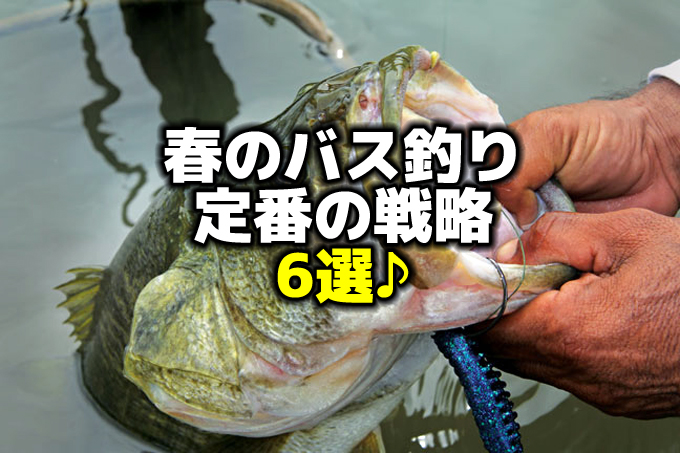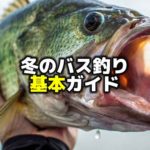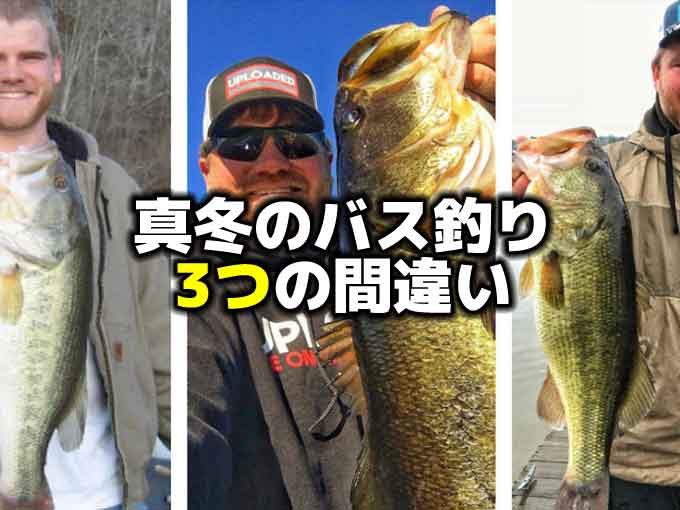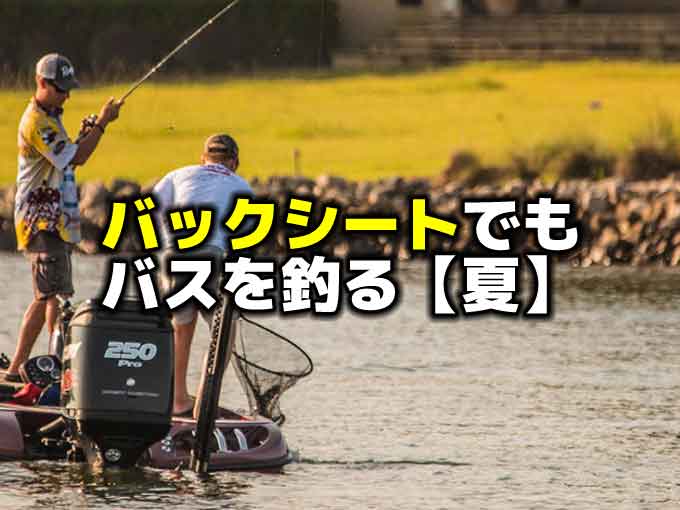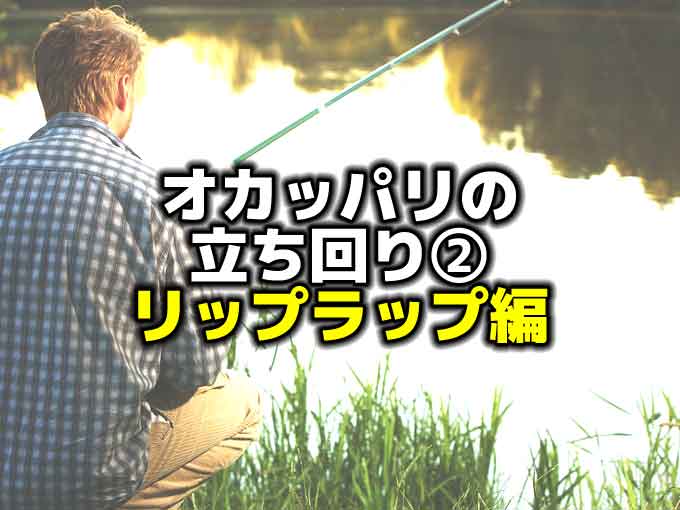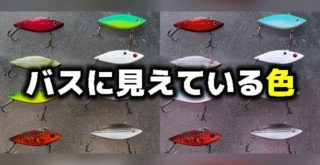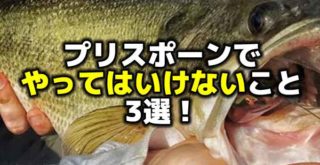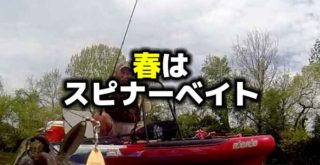流れがある場所でのフィネス
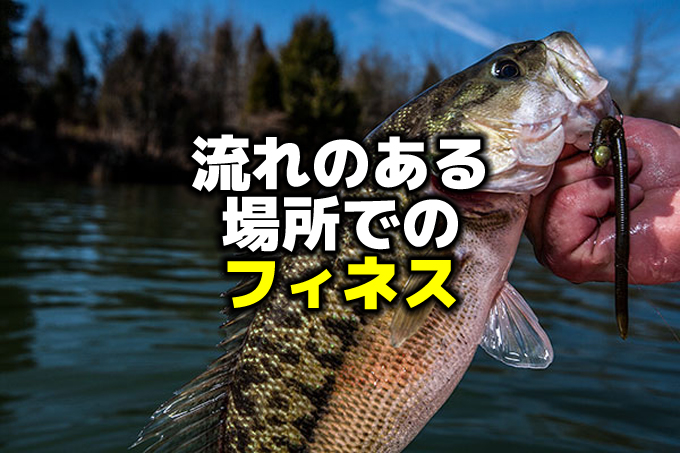
Photo by scout.com
こんにちは!店長の小山です!
本日は海外サイトより、”How to Finesse More Bass in Strong Current”という記事を引用してご紹介いたします。
引用先:scout.com”How to Finesse More Bass in Strong Current”by Walker Smith – Jan 14, 2014(海外サイトです)
皆さんの通うフィールドの中に、流れのある場所はありますでしょうか。
バスのいるフィールドのタイプにはさまざまありますよね。湖、リザーバー、池、川、沼などなど。
フィールドに多くのタイプがあるということは、それだけバスが私たちの身近にいるということを示しているわけで、バス釣りをより夢中にさせる原因のひとつでもありますし、釣り人としてはとても嬉しいことですね。しかし、しっかりと釣果をあげるにはそのフィールドに合った釣り方というものをしなければならないということでもあります。
流れというと単純に川を想像してもいいのですが、他にもダムなら放水によって、湖や池では風の影響やインレットとアウトレットの関係で流れがあったり、発生したりします。
流れというものはバスを特定の場所にポジションさせることになり、慣れてくるとバスの居場所を予測することもできるようになってきますのでバス釣りが非常に有利になりますが、同時に流れがあることでバスの居場所がわかってもアプローチが難しくなる場合もあり、多少の実験や経験や試行錯誤が必要になるかもしれません。
この記事は、アメリカのフィッシングメディア「Wired2Fish」の記者、ウォーカー・スミス氏が、自身の経験から流れの中でのフィネスフィッシングのコツを共有してくれています。
流れる水に対してどのように付き合っていけばいいか、読んでみてはいかがでしょうか。
ラウンドジグヘッドは避ける
For whatever reason, when many anglers fish with weighted soft plastic rigs, only two possibilities are often considered—a bullet-shaped Texas rig weight or a round jighead. I’ve quickly learned that these two styles, while effective in other situations, are not ideal when you’re faced with heavy current.
I started the day with a round 1/4-ounce jighead and had nothing but problems. After making a long cast up-current, I’d have about six seconds to present my worm before the current washed it to the back of my boat. No matter the casting angle or the speed at which I worked the jighead, I couldn’t keep my bait in the strike zone long enough—until I made an important realization.
When the current is ripping and you’re trying to target deep fish, avoid using round jigheads. Regardless of its weight, a round jighead is prone to tumbling with the current. On every cast I could feel my shaky head rolling across rocks, which was not only unnatural, but also resulted in a bunch of hang-ups.
Instead, consider using a football-shaped head or some sort of head with a flat surface. I switched to a VMC Rugby Jig and Buckeye Pro Model Spot Remover and noticed an immediate improvement. These head shapes were very stable in the current and stayed in place much better than my previous round jighead. They didn’t roll or tumble and allowed me to take my time while carefully presenting my offering to the wary, post-frontal bass.
If you’re used to fishing with regular round-shaped shaky heads, this combination may look a bit strange, but try to remember—you’re not going to catch fish if you can’t keep your bait where they live.
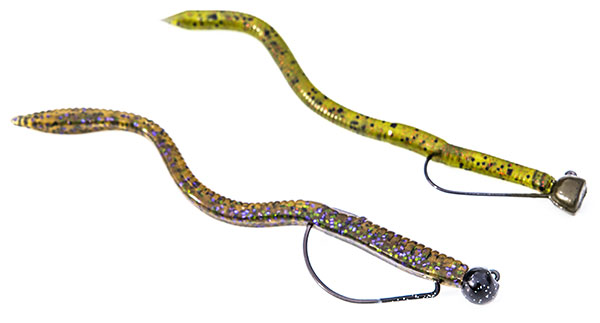
Photo by scout.com
何らかの理由で、多くのアングラーがワームで釣りをするときはバレットシンカーでのテキサスリグか、ラウンドヘッドのジグヘッドリグの2つを使う可能性が高いと思います。これらの2つのスタイルは、他の状況では効果的ですが、強い流れのあるフィールドでは理想的ではないことはすぐに学ぶことができました。
その日は1/4オンスのラウンドジグヘッドから始めましたが、これが問題だったのです。上流に向かってロングキャストしても、6秒もアクションしたらもうボートの後ろまで流されてしまうのです。キャスティングの角度やジグヘッドの巻きスピードに関係なく、ここでやるべき重要なこと、つまり長い間ストライクゾーンにルアーをキープすることができないのです。
激流でのディープの魚を狙いたい場合、ラウンドジグヘッドは使用しないでください。重さに関わらず、ラウンドジグヘッドは流れに乗って転がってしまう傾向があります。すべてのキャストにおいてジグヘッドが岩の上を転がっていることすら感じることなく、不自然なアクションにもつながり、結果的に根掛かりばかりする羽目になってしまいました。
代わりに、フットボールヘッド、またはフラット面を持つジグヘッドを使用するようにしてみてください。私はVMC Rugby Jig(VMC・ラグビージグ)とBuckeye Pro Model Spot Remover(バックアイ・スポットリムーバー)に切り替えたところ、直ちに改善が見られました。これらのヘッド形状は、流れの中でも非常に安定していて、ラウンドジグヘッドに比べて狙い通りの場所にとどまっていました。転がったりひっくり返ったりせず、低活性のバスに対して注意深く慎重に、自分の狙い通りにアプローチすることができました。
通常のラウンドジグヘッドの釣りに慣れている場合、この組み合わせはちょっと不慣れな動きになってしまうかもしれませんが、魚のいるところにルアーが届かないと思ったら、思い出してみればいいと思います。
ロッドティップは下げる
We’re always taught to keep our rod tips on the high-side when working a jig or weighted soft plastic, but a high rod tip can cause multiple issues in areas with current.
When your rod tip is high, you’re putting more line between your rod tip and the water. This leads to a major problem that results in a significant decrease in sensitivity—line bow. When the current bows your line to the side, your ability to detect bites will be greatly hindered. Throughout the winter months, even the biggest bass may not crush your bait so maintaining the ability to feel even the softest, most subtle bite is an absolute must
A low rod tip will also help you keep contact with the bottom. You’ll be able to feel very small but important transitions in bottom composition whether it’s a shell bed, a change in rock size or a fallen tree that has been washed against a steep bank. If the current is especially heavy, don’t be afraid to put your rod tip right above the water’s surface. It may look like you’re dragging a Carolina rig but you’ll have a much better feel of what’s going on down there.
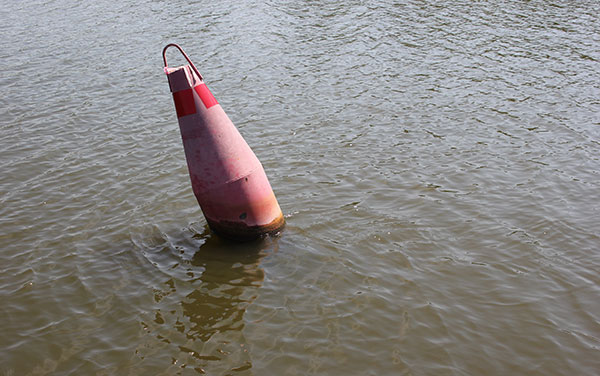
Photo by scout.com
ジグやワームでの重いリグを使うとき、ロッドティップは常に高く保つようにと教わったことがあるかもしれませんが、ロッドティップが高いと流れのあるエリアでは複数の問題が生じる可能性があります。
ロッドティップが高いと、ティップから水面までの間に多くのラインがあることになります。これは、ラインのたるみが感度を大きく落としてしまうという大きな問題を引き起こします。流れによってラインが横に弧を描くと、あなたのバイトを検知する能力が大きく妨げられます。冬の間など、たとえ大きなバスであってもルアーをひったくって行くことができないので、軽く、微妙なバイトでも感じとる能力を維持することは絶対に必要です。
ロッドティップが低いと、ボトムコンタクトを維持するのに役立ちます。それがシェルベッド(死んだ貝の堆積)、岩の大きさの変化、急なバンクに流れ着いた沈木などにかかわらず、非常に小さくても重要なボトムの質の移り変わりを感じることができます。流れが特に強い場合は、ロッドティップを水面のすぐ上に置くことを恐れないでください。キャロライナリグをズル引いているように見られるかもしれませんが、ボトムで起きているなにかの感触をよくとれるようになります。
変化の下流側に注目
Current eddies aren’t always easy to see, making it important to visualize the current’s effect on cover and structure
Current eddies aren’t always as obvious as one would think. It’s tempting to think of them as huge, slick areas of water, but they’re often very subtle and difficult to see from the surface.
When you’re breaking down an area with current, try not to overcomplicate things. Bass are opportunistic feeders and make a concerted effort to use as little energy as possible when feeding—just like one of us sitting close to a restaurant buffet.
For this reason, they will often position themselves on the down-current side of a piece of cover such as a tree, stump or rock pile and face into the current. This allows them to hang out and relax in slack water, waiting for an easy meal to pass by.
So if you’re looking at a piece of cover and the current is coming from the left—make a few casts to the right side of the cover and vice-versa. It’s not overly complicated, but it’s one of those aspects of bass fishing that we’re all guilty of overlooking periodically.
流れによる渦は必ずしも見つけやすいわけではありませんが、カバーやストラクチャーに対して流れがどう影響しているかを見極めることが重要です。
流れによる渦は、常に思ったほどはっきりとしているわけではありません。ゆったりと滑らかな流れのエリアだと思っても、実は非常に微妙で水面から見極めることは難しいのです。
そのエリアの流れを見極めようとするときは、事を複雑にしないでください。バスは気まぐれな食性を持ち、食べる時もできるだけエネルギーを消費しないように努力しています。焼肉の時に網の正面に座りたがるようなものです。
このため、彼らの多くは樹木、スタンプまたは石積みなどのカバーの下流側にポジションを取り、流れに対策します。これで、彼らがゆるい流れでリラックスしてくつろぎ、食べやすい食事が通過するのを待つことができます。
もしあなたがカバーを見て流れが左から来ていれば、カバーの右側にキャストします。逆の場合も同様です。まったく複雑なことではありませんが、これは我々が時々見落としがちなバス釣りの側面の一つです。
流れに対してのキャスト
This past weekend I was concentrating my efforts on a 30-foot deep river ledge that was absolutely loaded with bass. If I were to cast perpendicularly to it, my bait would barely touch the bottom before the current got ahold of it. Whenever I made a cast down-current, I had a hard time controlling my boat speed and I’d wind up on top of it. Once I started casting up-current, I started catching a bunch of fish.
Like we just discussed, casting into the current makes a lot of sense because of a bass’ preference to position itself facing into the current. But it’s also very important to consider your boat positioning and control.
When you point the nose of your boat into the current and cast directly ahead, you’re able to control your boat very easily. By keeping a steady foot on your trolling motor, you can make small adjustments and avoid being washed backwards by the current. Whenever you turn your boat perpendicular to or away from the current, you give the current a lot more “boat” to hit, resulting in constant readjustments and poor casting angles.
By pointing my boat into the current, keeping my MotorGuide on a constant 6-speed setting and making casts up-river, I was able to precisely target small intricacies on the river ledge and present my bait naturally.
この前の週末、私はバスが群れている水深9メートルの川棚を狙っていました。真下に落とすと流されてしまい、ルアーはボトムにほとんど触れることができません。ダウンキャスト(下流に向かってキャスト)すると、今度はボートのスピードをコントロールするのに苦労し、すぐ回収してしまいました。アップキャスト(上流にキャスト)しだすと、たくさんの魚が釣れるようになりました。
このように、流れに対するキャストは、流れに向かい合っているというバスの性質もあるためそれ自体に非常に意味があります。しかし、ボートポジションやボートコントロールを考慮することも非常に重要です。
ボートの先端を流れに向けると、ボートを非常に簡単にコントロールできます。エレキのフットコントローラーにしっかりと足をつけておくことで、微調整ができ、流れによって後方に流されるのを避けることができます。ボートを流れに対し横向きに、または流れから逃げてしまうと、多くの流れがボートに当たってしまい、体勢を立て直すのが難しく、キャストもままなりません。
私の場合ボートを流れに向け、エレキの目盛りを6で一定スピードに保ち、上流にキャストすることで、川棚の小さく複雑な部分を正確に狙え、ルアーをナチュラルにプレゼンテーションすることができました。
ラインに触れ続ける
This not only applies to current fishing, but all types of finesse fishing with spinning gear. Throughout my guiding career, teaching new anglers how to detect bites is, by far, the most difficult aspect. If you’re relying solely on your rod tip to detect bites, you won’t catch as many fish. It sounds harsh, but it’s the truth—especially when you throw a bunch of current in the mix.
There’s a really simple way to feel more bites, however. Keep the index finger of your rod-hand—whichever hand you hold the rod with—on your tight fishing line any time you’re not reeling. This gives you direct contact with your bait without the rod tip absorbing any energy from the initial bite. Whether you’re battling current, wind or both, you’ll be amazed how much this increases your sensitivity.
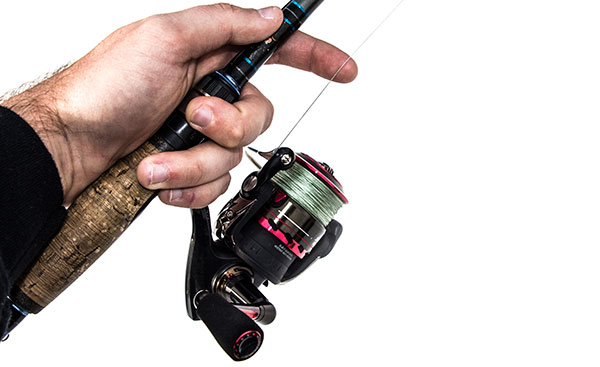
Photo by scout.com
これは、流れの中での釣りに適用されるだけでなく、スピニングタックルで行うすべてのフィネスフィッシングに適用されます。 私はフィッシングガイドを行っておりますが、初心者の釣り人にバイトを検知する方法を教えることは、最も難しい仕事のひとつです。 バイトを感じるためにロッドティップだけに頼っているのであれば、多くの魚をキャッチすることはできません。 厳しいように聞こえるかもしれませんが、事実なのです。
しかし、多くのバイトを感じる簡単な方法があります。 ロッドを握っている手の人差し指で、リールを巻いている時以外は常にラインにしっかりと触れていてください。 これは、初期のバイトのエネルギーをロッドティップが吸収してしまうことなく、自分のルアーに直接触れて感じることができます。 強い流れや風、またその両方と戦わなくてはいけない場合でも、これでどれほど感度が上がるかということに驚かれることでしょう。
根掛かりは起きる
We all have that fishing buddy who absolutely loses their mind whenever they get hung. Fishing tackle gets expensive, so I can certainly understand the frustration.
Unfortunately, hang-ups are inevitable when you’re bass fishing in current. Even with the right jighead, rod angle, casting angle and presentation, you can fully expect some snags. Instead of losing your cool, cinching down your drag and trying to break your line, relax—you can probably get it back.
Most of your current-oriented hang-ups are due to the bait washing into small crevices such as rock cracks or splits in wood cover. When this happens, don’t start snatching. Simply go up-current from your bait, keep steady tension and more times than not, you’ll get your gear back. As long as your hook doesn’t penetrate into the cover, you should be good to go.
釣り仲間のなかには、根掛かりが起きると平常心を失ってしまう人もいると思います。釣り道具は高価なので、確かにその不満を理解することはできます。
残念ながら、流れの中でのバスフィッシングでは、根掛かりは避けられません。正しいジグヘッド、ロッドの角度、キャスティング角度、プレゼンテーションが合っていても、何度か根掛かりしてしまうことは完全に予測できます。冷静さを失い、ドラグを締めてラインを切ろうとする代わりに、リラックスして、根掛かりを外しに行きましょう。
流れの中での根掛かりのほとんどは、岩の裂け目やウッドカバーの枝の割れ目などの小さな隙間にルアーが流し込まれてしまうことに起因します。これが起こっても、無理に引っ張らないでください。ラインテンションを保ちながらちょっと時間を使ってルアーのあるあたりの上流まで移動すれば、簡単に根掛かりは外れるでしょう。フックがカバーに深く刺さっていない限り、取りに行くほうが良いはずです。
いかがでしたか。
私は残念ながら川でのボートのバス釣りはしたことがありません。
これに近い状況なら、琵琶湖で体験したことがあります。
えっ、琵琶湖は川じゃないでしょ、と思われるかもしれません。
琵琶湖は日本一大きな湖ですが、水位の調節は最下流の堰で行われており、実態は巨大なダムのようなもので、大雨が続いたりすると放水量を多くするため強烈な流れが発生することがあるのです。ただし、周りから見ていてもその巨大な流れに気付くことはほとんどできません。ボートで浮いてみてはじめて、水面下のウィードがベッタリと倒れて波打っていたり、いつの間にか船が大きく流されているのに気付くことで体感できるのですが、記事にある通りこのときは確かにボートの操船やリグの流され方に手を焼くのです。
川でのオカッパリをされる方にも、この記事の流れに対する考え方はすんなりと入ってきやすいのではないでしょうか。
流れに加えて風の存在もありますよね。やっかいなのは、流れは右から左に流れているのに、風は左から右に強く吹いているとき。もうわけが分かりません(笑)。琵琶湖もそうですが、こんな風に流れに逆らった風が吹くと水面がめちゃくちゃ荒れるというのも川の特徴ですね。こんな時の方が釣れる気がするので私は好きなんですけどもね。
川のバスは常に流れに逆らっているため、筋肉が発達しやすいことと、またファイト中は流れも手伝って引きが強くなると言われていますし、流れの無いフィールドにはない攻め方があったりしますので、釣りそのものが全くの別物です。
川で浮きウィードが引っ掛かったりコンビニ袋が引っ掛かってしまった時の引きも強烈ですけどね(笑)
川を攻略することはバス釣りの引き出しを広げることにもなり、川と他のフィールドを通い分けることで楽しさも倍増すると思います。この記事はフィネスというところに焦点を当てていますが、川というフィールドはどちらかと言えばスレずらいフィールドですので、巻き物をガンガン投げるのも楽しいです。
もし、これまで川というフィールドにあまり馴染みがないようであれば、ぜひ出かけてみて下さい。近くにいい川がなくても、遠征してみるほどの価値も充分あるかと思います。
冬になっても凍らないのもいいところ…ですが、くれぐれも安全には充分注意して楽しんでくださいね!
それでは、また。
毎度ありがとうございます!





